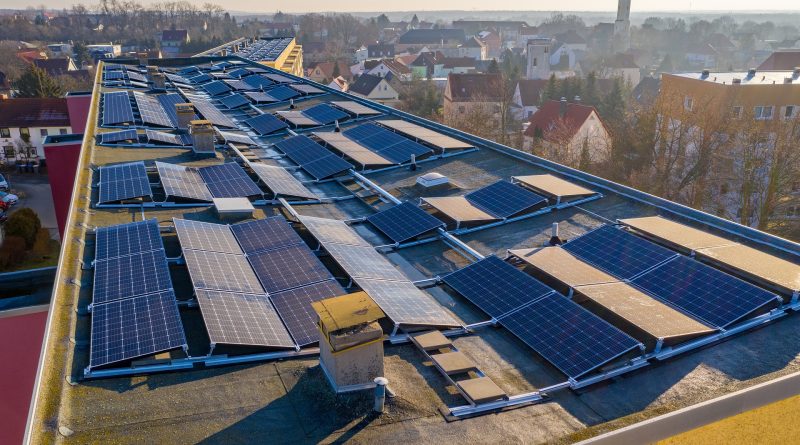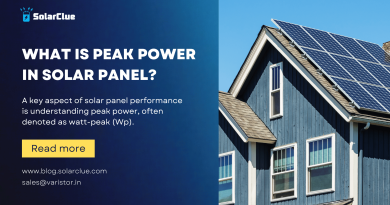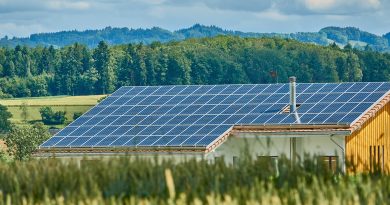Off-Grid Solar System Components: Exploring the Essentials
Solar power has gained immense popularity in recent years as an alternative and sustainable source of energy. Off-grid solar power systems have proven to be a game-changer for individuals and communities living in remote areas or wanting to reduce their dependence on the traditional power grid. These systems enable users to generate their electricity using the abundant energy from the sun. In this blog, we will explore the components of an off-grid solar power system and delve into what makes them a reliable and clean energy solution.
Table of Contents
The Solar Panels
The solar panels are the heart of any off-grid solar power system. These panels comprise photovoltaic (PV) cells that directly convert sunlight into electricity. The number and size of solar panels needed depend on the amount of energy required by the user. Typically, multiple panels are arranged in arrays to maximize energy generation. It is necessary to place the solar panels in an area with maximum exposure to the sun, preferably on rooftops or open spaces that are free from shade.
The Charge Controller
To avoid damage to the batteries, a charge controller is an essential component in an off-grid solar power system. The charge controller regulates the flow of electricity from the solar panels to the batteries, preventing overcharging or deep discharging. This device ensures the longevity and optimal performance of the batteries by maintaining them at the appropriate voltage levels. Modern charge controllers also come with various features like LCD displays and advanced charge management algorithms.
The Batteries
Batteries serve as the energy storage system in off-grid solar power installations. They store the excess energy generated during the day to be used during times when the solar panels are not producing electricity, such as at night or during cloudy days. Deep-cycle batteries, such as lead-acid or lithium-ion batteries, are commonly used for this purpose. Proper battery sizing is crucial to ensure sufficient stored energy for uninterrupted power supply during periods of low or no sunlight. It is essential to take into account the energy demands, as well as the battery’s capacity and efficiency in order to select the right type and size of batteries.
The Inverter
Most households and businesses utilize alternating current (AC) for their electrical devices. However, solar panels generate direct current (DC) electricity. Here is where the inverter comes into play. The inverter converts the DC electricity from the solar panels into AC electricity compatible with household appliances and the power grid. In addition to converting DC to AC, some inverters come with advanced features like maximum power point tracking (MPPT) algorithms that optimize energy production, further increasing the efficiency of the overall off-grid solar power system.
The Mounting Structures
Securing the solar panels is crucial to ensure their durability and optimum energy generation. Mounting structures provide a sturdy and secure base for the panels and prevent any damage caused by unexpected weather conditions like strong winds or heavy snowfall. There are various mounting options available, such as roof-mounted systems or ground-mounted systems, depending on the available space and architectural considerations. The mounting structures should be designed to provide adequate orientation and tilt to the panels to maximize solar exposure.
The Wiring and Protection
Proper wiring and protection are vital for the safe and efficient functioning of an off-grid solar power system. Quality wiring, such as copper or aluminum, ensures minimum power losses during transmission and should be sized according to the system’s maximum current capacity. Additionally, protective devices like fuses, circuit breakers, and surge protectors should be incorporated to safeguard the system against electrical faults and power surges. It is recommended to consult an electrician or solar professional to ensure compliance with safety standards and efficient system operation.
Conclusion
The components of an off-grid solar power system work together to harness the abundant energy from the sun and provide a reliable and sustainable source of electricity. From solar panels converting sunlight into electricity to batteries storing the excess energy, each component plays a vital role in ensuring uninterrupted power supply. Additionally, charge controllers, inverters, mounting structures, wiring, and protective devices all contribute to the efficiency and safety of the system. Embracing off-grid solar power systems brings us one step closer to a greener and more sustainable future where clean energy is readily available to all.
Ready to embrace off-grid solar power? Dive into the world of sustainable energy with SolarClue®. Explore our range of advanced solutions designed to power your life while minimizing your carbon footprint. Discover the latest in solar technology and take a step towards a greener, more energy-efficient future. Visit our website now!
Frequently Asked Questions
Key components include solar panels, charge controllers, batteries, inverters, and a backup generator.
Battery lifespan varies but generally lasts 5-15 years, depending on the type and usage.
While possible, professional installation ensures optimal performance and compliance with safety standards.
Yes, with proper design and insulation, off-grid solar systems can function effectively in various climates.
Regular checks, cleaning, and occasional battery maintenance are essential for optimal performance.
Yes, with the right capacity, an off-grid solar system can meet the energy needs of an entire home.
In some regions, incentives, tax credits, and rebates are available to promote off-grid solar adoption.
Payback periods vary, but many systems pay for themselves within 5-10 years.
SolarClue® offers cutting-edge technologies and expert guidance to maximize the efficiency of your off-grid solar setup.
Yes, off-grid solar systems can be integrated with wind or hydro power for a hybrid renewable energy solution.




